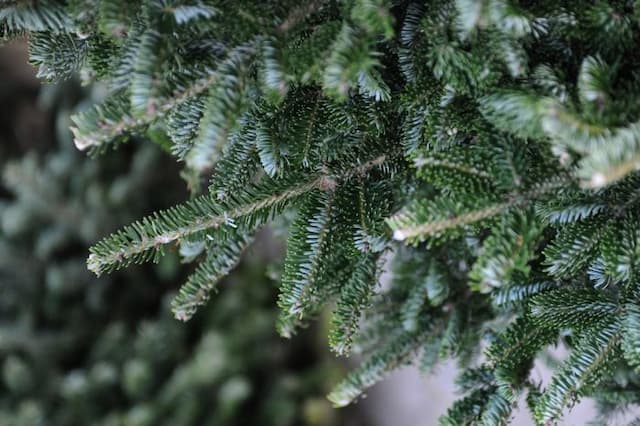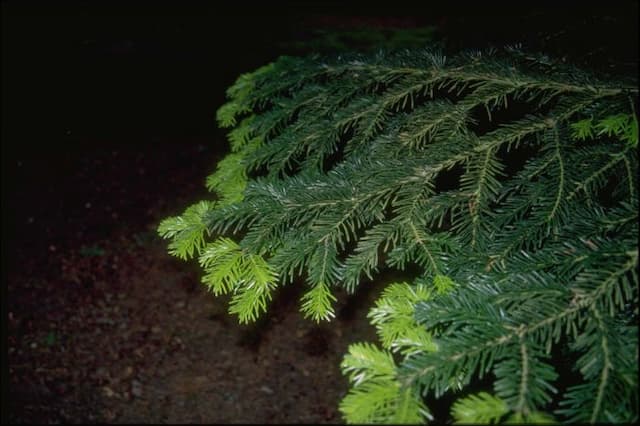Eastern white pine Pinus strobus 'Tiny Kurls'

ABOUT
Pinus strobus 'Tiny Kurls', also known as the Eastern White Pine 'Tiny Kurls', is a decorative variant of the common Eastern White Pine. Unlike the standard version of this plant, 'Tiny Kurls' has distinct foliage that sets it apart. The needles, which are the leaves of this pine variety, are unique in their presentation. They are twisted or curled, creating an interesting and unusual texture that is unlike the straight, smooth needles of the typical Eastern White Pine. The needles grow in bunches, called fascicles, and this variety tends to have five needles per fascicle, a characteristic feature of the Eastern White Pines. This cultivated form of the Eastern White Pine displays green needles which might be a bit bluish-green, adding subtle color variations that enhance its visual appeal. Throughout the seasons, the needles maintain their color, providing a reliable and consistent display of greenery. 'Tiny Kurls' possesses a natural symmetry and while its growth habit is typically upright, the exact form can vary slightly with each individual specimen. The branches grow uniformly around the central trunk and are characteristically dense as they showcase the curled needles. The bark of 'Tiny Kurls' is another element of its appearance that maintains the familiar traits of the Eastern White Pine. It is typically a grey-brown and develops a rugged, textured look as the tree matures. As a conifer, 'Tiny Kurls' produces cones which are an integral part of its appearance. However, these cones are often smaller and less conspicuous than those found on larger standard Eastern White Pines. They generally appear in clusters and add another layer of texture and interest to the plant. Overall, the Eastern White Pine 'Tiny Kurls' is a fascinating and decorative evergreen with distinctive, curled needles that set it apart from other members of its species, creating a distinctive visual interest in landscaping and garden settings.
About this plant
 Names
NamesFamily
Pinaceae
Synonyms
Eastern White Pine, Northern White Pine, Weymouth Pine, Soft Pine
Common names
Pinus strobus 'Tiny Kurls'.
 Toxicity
ToxicityTo humans
Eastern white pine (Pinus strobus 'Tiny Kurls') is generally not considered toxic to humans. Ingestion of plant parts typically does not cause poisoning or serious health issues. However, it's always wise to avoid eating parts of ornamental plants as they are not intended for human consumption.
To pets
Eastern white pine (Pinus strobus 'Tiny Kurls') is not commonly known to be toxic to pets. If ingested, it is unlikely to cause significant toxicological issues. However, ingestion of non-food items can sometimes lead to gastrointestinal upset or obstruction, so it's still best to prevent pets from chewing on plants.
 Characteristics
CharacteristicsLife cycle
Perennials
Foliage type
Evergreen
Color of leaves
Green
Height
3-4 feet [0.9-1.2 meters]
Spread
2-3 feet [0.6-0.9 meters]
Plant type
Tree
Hardiness zones
3
Native area
North America
Benefits
 General Benefits
General Benefits- Aesthetic Appeal: Pinus strobus 'Tiny Kurls', also known as the Eastern White Pine 'Tiny Kurls', has a unique, twisted needle feature that adds visual interest to landscapes.
- Compact Size: Its dwarf growth habit makes it suitable for small gardens and spaces where a full-sized pine would be too large.
- Low Maintenance: This cultivar requires minimal pruning and is generally low maintenance once established.
- Drought Tolerance: Once established, it can tolerate periods of drought, reducing the need for regular watering.
- Adaptability: The Eastern White Pine 'Tiny Kurls' can adapt to a range of soil types, though it prefers well-drained, acidic soils.
- Cold Hardy: It is hardy in a range of USDA zones, typically from 3 to 8, making it suitable for various cold climates.
- Wildlife Habitat: Provides food and shelter for birds and other wildlife, creating a biodiverse environment.
- Year-Round Interest: Its evergreen foliage offers year-round color and texture in the garden, even in the dull winter months.
- Soil Protection: The root system helps to prevent soil erosion, especially in sloped areas.
- Privacy: Can be used as a natural screen or hedge to create privacy in the garden or yard.
 Medical Properties
Medical PropertiesThis plant is not used for medical purposes.
 Air-purifying Qualities
Air-purifying QualitiesThis plant is not specifically known for air purifying qualities.
 Other Uses
Other Uses- Miniature Landscapes: The 'Tiny Kurls' Eastern White Pine can be an ideal plant for creating miniature landscapes, due to its small size and unique curled needle texture.
- Bonsai: Because of its compact growth and interesting form, it can be trained as a bonsai, offering a unique twist on this traditional Japanese art.
- Educational Tool: This plant can serve as an educational tool in botany or horticulture classes to teach about plant growth habits and conifer characteristics.
- Photography Subject: Its distinctive appearance makes it an excellent subject for photographers specializing in plant and garden photography.
- Container Gardens: Its modest size allows it to thrive in container gardens, providing greenery to spaces such as balconies and patios.
- Fairy Gardens: 'Tiny Kurls' can be used to craft whimsical fairy gardens, contributing to the ethereal and magical aesthetic with its curled needles.
- Themed Events: It can be incorporated into themed events or displays, such as winter wonderlands or forest settings, due to its evergreen nature and unique texture.
- Artistic Inspiration: Artists may use the interesting form of the 'Tiny Kurls' as inspiration for artwork or as a subject in botanical illustration.
- Wildlife Shelter: While other larger pines are better suited, 'Tiny Kurls' can still offer shelter to small wildlife, such as insects and birds, in a densely planted garden.
- Noise Reduction: When used in dense plantings, 'Tiny Kurls' Eastern White Pine can help to reduce noise pollution in a small garden space.
Interesting Facts
 Feng Shui
Feng ShuiEastern white pine 'Tiny Kurls' can be used in Feng Shui to promote a sense of longevity and immortality. Pine trees are symbols of wisdom and nobility, so placing an Eastern white pine 'Tiny Kurls' in the Bagua area associated with knowledge (Northeast) or the area associated with wealth (Southeast) could enhance these aspects of one's life.
 Zodiac Sign Compitability
Zodiac Sign CompitabilityEastern white pine 'Tiny Kurls' is not used in astrology practice.
 Plant Symbolism
Plant Symbolism- Longevity: Pinus strobus, commonly known as Eastern White Pine, can live for hundreds of years, symbolizing endurance and the passage of time.
- Peace: Pine trees are often associated with peace and tranquility, perhaps due to their perennial nature and the calmness of pine forests.
- Resilience: Eastern White Pines are hardy trees that can withstand harsh conditions, representing the strength to persevere and resilience in adversity.
 Water
WaterThe Eastern White Pine 'Tiny Kurls' should be watered deeply and infrequently to mimic natural conditions. Typically, this means applying water until the soil around the roots is moist but not waterlogged. For a newly planted 'Tiny Kurls', water with approximately 3 gallons every week during the first growing season. Once established, reduce watering frequency but ensure each watering is deep, potentially increasing the amount to 5 gallons every two to three weeks during dry periods. Always check the soil moisture before watering to prevent over-watering.
 Light
LightEastern White Pine 'Tiny Kurls' thrives in full sun to partial shade. The best spot for planting is an area where it receives at least six hours of direct sunlight per day. Areas with morning sun and afternoon shade or dappled light throughout the day are also suitable.
 Temperature
TemperatureEastern White Pine 'Tiny Kurls' is hardy and can withstand a range of temperatures, with an optimal growth range between 60°F and 75°F. It can survive minimum winter temperatures down to -30°F and maximum summer temperatures up to around 90°F, making it adaptable to various climates.
 Pruning
PruningPruning Eastern White Pine 'Tiny Kurls' typically involves removing dead or damaged branches to maintain plant health, which should be done as needed regardless of the season. Structural pruning to shape the tree is best done in late winter or early spring before new growth starts. Pruning is not a frequent requirement for this species, and over-pruning should be avoided to maintain its natural form.
 Cleaning
CleaningNot needed
 Soil
SoilEastern White Pine 'Tiny Kurls' thrives in well-draining acidic soil, with a pH range of 5.0 to 6.0. A mix of sand, peat, and pine bark in equal parts creates an ideal environment for its roots. Regular monitoring of soil acidity is recommended to maintain optimal conditions for growth.
 Repotting
RepottingEastern White Pine 'Tiny Kurls' should be repotted every 2 to 3 years. The slow growth rate reduces the need for frequent repotting, but it is still vital to refresh the soil and check root health.
 Humidity & Misting
Humidity & MistingEastern White Pine 'Tiny Kurls' is tolerant of a wide range of humidity levels but prefers average ambient humidity. Extreme dryness or humidity should be avoided to maintain the plant’s health.
 Suitable locations
Suitable locationsIndoor
Use bright light, cool room, and avoid dry heat for Eastern White Pine 'Tiny Kurls'.
Outdoor
Plant in full sun, mulch well, and protect from strong winds for Eastern White Pine 'Tiny Kurls'.
Hardiness zone
3-7 USDA
 Life cycle
Life cyclePinus strobus 'Tiny Kurls', commonly known as Eastern White Pine or simply White Pine, begins its life cycle with seed germination, which typically occurs in the spring following stratification, where cold temperatures break seed dormancy. The seedlings then grow into juvenile plants, establishing a root system and foliage in the form of needles. As saplings, they undergo a period of rapid growth, eventually maturing into adult trees that can reach substantial heights, though 'Tiny Kurls' is a dwarf cultivar and remains relatively small. During maturity, the White Pine produces both male and female cones; the male cones release pollen, which fertilizes the female cones through wind pollination. Once fertilized, the female cones develop seeds over several months, which are then dispersed, often by wildlife or wind, to create new seedlings. This cycle continues as long as the tree lives, which, for White Pine, can be several hundred years, although 'Tiny Kurls', being a cultivated variety, may differ in longevity.
 Propogation
PropogationPropogation time
Early Spring
The Eastern White Pine 'Tiny Kurls' is typically propagated through the use of softwood cuttings. This method is most successful when done in late spring or early summer, when new growth is green and flexible but not yet hardened. To propagate, cuttings of about 4 to 6 inches (10 to 15 centimeters) are snipped from the tips of branches. These cuttings should include several sets of needles. The cut end can be dipped in a rooting hormone powder to encourage root development and then planted in a well-draining potting mix. High humidity is maintained around the cutting, often by covering it with a plastic dome or bag, and the soil is kept consistently moist but not waterlogged. With proper care, roots will develop within a few weeks to a few months, at which point the new plant can gradually acclimate to less humid conditions before transplanting.








